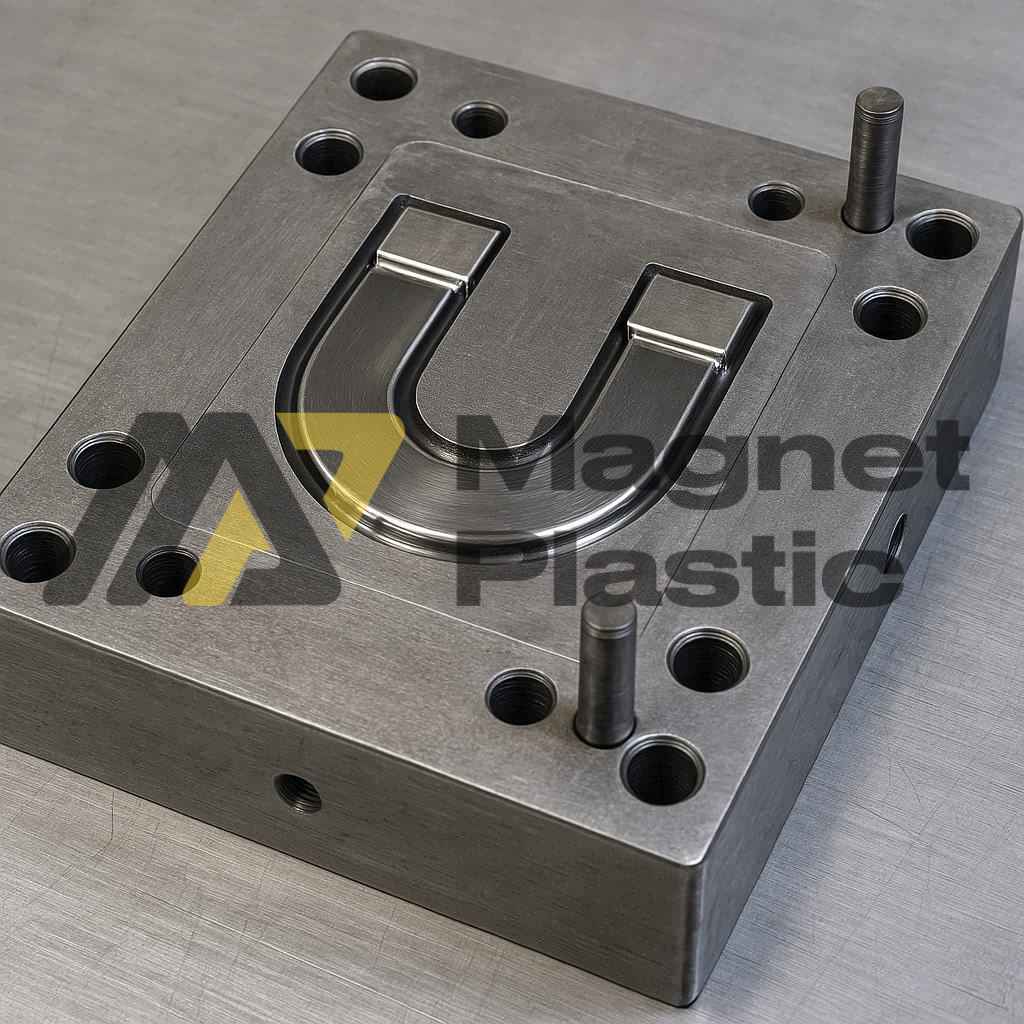Injection-Molded Magnets: Innovation, Precision, and Versatility
Injection-molded magnets represent one of the most advanced solutions in modern magnetic design. This type of magnet offers engineers and designers a unique combination of geometric freedom, magnetic stability, and production efficiency. They are manufactured by blending magnetic materials such as ferrite, neodymium, or samarium-cobalt with a thermoplastic polymer, typically PPS (polyphenylene sulfide). This mixture allows the magnet to be injection-molded like conventional plastic, achieving complex and precise shapes that are difficult, or even impossible, to produce with sintered magnets.
Advantages of Injection Molding
One of the main advantages of injection-molded magnets is the ability to overmold them directly around existing components such as shafts, rings, or gears. This process eliminates the need for secondary assemblies, adhesives, or mechanical fasteners, reducing costs and production times. Furthermore, injection molding allows high-volume production with very tight dimensional tolerances, without requiring post-machining.
Compared to sintered magnets, injection-molded magnets are more shock-resistant, chip-proof, and offer excellent dimensional accuracy. They are lighter, stable, and provide good corrosion resistance thanks to polymers like PPS or reinforced nylon.
Materials and Magnetic Properties
Injection-molded magnets can be made from various materials: neodymium (NdFeB), ferrite, and samarium-cobalt (SmCo). The choice depends on the requirements of the final application. Neodymium provides the highest magnetic strength, while samarium-cobalt offers excellent thermal stability and corrosion resistance. Ferrite, being more economical, is suitable for applications where high magnetic strength is not critical.
These magnets are also resistant to high temperatures, corrosive environments, and harsh weather conditions, making them a reliable solution for many industries.
Industrial Applications
Thanks to their adaptability and performance, injection-molded magnets are used in a wide range of applications: electric motors, fans, pumps, actuators, generators, sensors, automation systems, speakers, household appliances, and electronic devices. In the automotive industry, they are found in ventilation motors, ABS sensors, power steering systems, and locking mechanisms.
They are also used in sectors such as robotics, telecommunications, medical (MRI), renewable energy, and consumer electronics. Their ability to produce small, complex, or larger parts provides an excellent balance of cost and performance.
A Growing Technology
Injection-molded magnets are establishing themselves as a modern and efficient alternative to traditional techniques. Their ability to combine precision, customization, and durability makes them an essential component of current industrial innovations, contributing to the advancement of numerous sectors.
